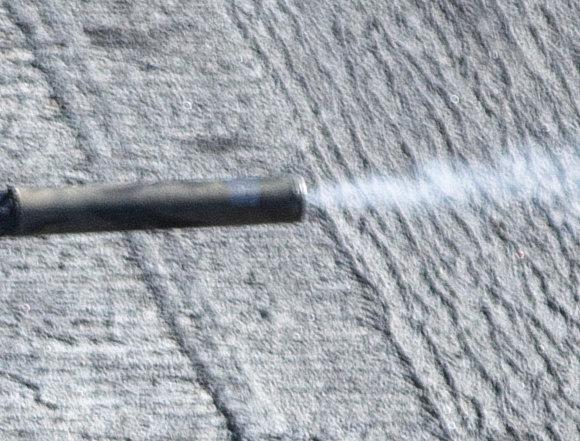(Continue) Let's get to the rifles (bolt action or semi-automatic).
I would like to remind you that, with some exceptions, in Italy you cannot "silence" a weapon.
Give powder charges in quantity and quality (combustion speed) suitable to obtain relatively high subsonic speeds, and therefore still with a large quantity of gas to attenuate the velocity of the projectile exiting the muzzle of the weapon, the task of suppressors for long weapons will be very complex.
As in the case of handguns, but perhaps even more specifically, the design of suppressors includes both theoretical and practical fundamentals of physics (fluid dynamics and thermodynamics) and chemistry (formulas and recipes optimized to obtain particular combustion speeds), which will give rise to the production of cartridges to be tested in order to satisfy the particular operational needs in specific use scenarios.
There are subsonic cartridges on the market in the most commonly used rifle (as well as pistol) calibers.
Apart from the luck (or expertise) of finding the right ones, which is always possible, I however believe that reloading (recreating, I would say better) the right cartridge for your rifle is, in general, the most correct thing to do in this particular context.
Already being able and knowing how to lower the speed of a bullet to highly subsonic greatly reduces the noise of the shot: as a famous slogan said, "seeing is believing". This, among other things, will lead to a practical understanding of how much the supersonic speed of the projectile influences the noise of the shot.
But why insist on "creating" your own cartridge?
"Every gun has its own voice", said the character of a famous western. He was and is absolutely right.
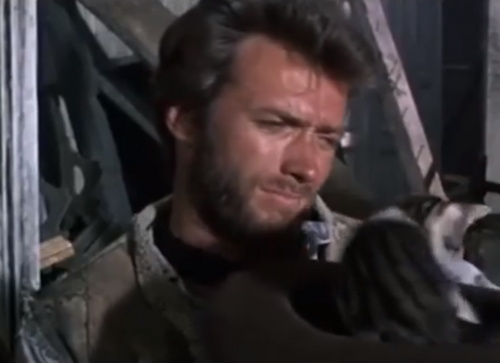
Each rifle was built with its own rifling pitch, its number of lines, which will even have their own geometry, and a specific barrel length. These singular technical characteristics, in themselves, would determine the need for customization of the cartridges.
If we also add a specific type of reset cycle, bolt action or semi-automatic (which requires a different, more dynamic load), I would say that there should be no doubts about the logic of reloading (or creating from new) our ammunition, even if testing the "commercial" ones certainly doesn't hurt. As always, our personal experience will determine the best performing choice.
Finally, we point out that the shape of the bullet used must also be carefully evaluated, given that the aerodynamics will have a minor influence on the flight of the projectile and that the weight must be chosen from the maximum acceptable for the rifling. We therefore certainly understood that making a cartridge that was born supersonic subsonic does not mean simply reducing the quantity of powder inside the case. It does not work like that.
Let us now dedicate the right space to the military use of suppressors for tactical rifles.
"Tactically", in fact, we have a pro, stealth, and a con, the rifle barrel lengthens by a few tens of centimeters, becoming more evident.
Let's take into consideration a hypothetical scenario: a sharpshooter positioned in an obviously hidden way, waiting for his target, who has already visualized the escape routes following the shot or rather... the shots (this already makes us understand the essential tactical option of not having the first shot detected, always a good and right thing).
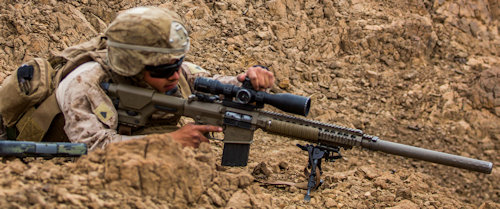
He will evaluate how many shots he can have before being detected. Making it difficult (but not impossible) for the enemy to identify where the shots are coming from is the dogma of every sniper.
Today there are portable sound detection systems capable of locating the position of a sniper to the nearest few square meters. As always, the time spent on localization will make the difference. Here is a reason, or rather The Reason, to have a valid suppressor (as well as valid specific training): gain time, knowing that with each shot there will be less and less of it.
Of course, with an effective suppressor the barrel of a sniper rifle extends by 30 centimeters, and even more. Okay. But if the silencer knows how to do his job well, this is a price that is willingly paid.
A trained marksman will be able to calculate the timing of the silenced subsonic shot, based on the mission context, compared to a supersonic one. He will have done the necessary tests to understand that, beyond 300 meters, targeting a target with a subsonic cartridge and a suppressor is essentially like playing a lottery where, due to the mindset, luck has almost no room.
What is different, however, is the tactical choice to still shoot with a supersonic cartridge with a suppressor mounted on the barrel, in order to gain a few more seconds, despite knowing that the shot, even if attenuated, will be heard, albeit with some uncertainty, which it will be possible to manage. But, in my opinion, these are "malice" that have more to do with the "outstanding" characteristics of the individuals in question. And their instructors.
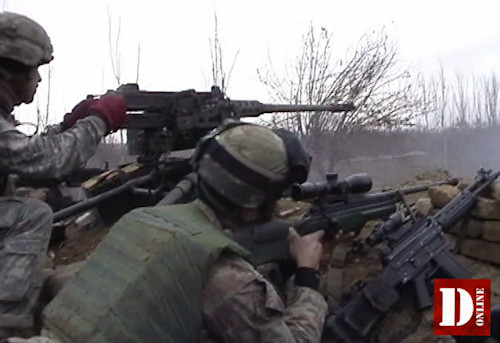 Now let's talk about using suppressors mounted on assault rifles.
Now let's talk about using suppressors mounted on assault rifles.
Anyone who has shot (or been around) a medium caliber rifle, in action, without hearing protection, can tell you that they have suffered trauma (ask the director for clarification).
A platoon, a section, a team carrying out an assault maneuver with semi-automatic rifles, unloads a real storm of fire on the objective (in the image frame of the "battle of Bala Murghab")
The first thing that happens to anyone who finds themselves nearby, be they enemy or friend, without adequate hearing protection, will be the laceration of their eardrums (assuming they have nothing worse to think about). This will mean a dangerous loss of essential "situational awareness". For example, think also of the use, in particular contexts, of "flash-bang" devices, specific for this purpose.
On the other hand, for those who attack, using hearing protection entails a certain tactical limit: you have to hear, listen, perceive in every way the exact position of friends and enemies. Together with active sound wave control systems (electronic headphones) commonly available today, suppressors represent a clear advantage (if well shared in the training phase).
In modern assault weapons (let's take for example the M4 carbine in 5.56x45 NATO caliber) a good suppressor is no longer than about twenty centimeters, therefore very manageable in any operational context. The ballistic degradation will not be more than 20, 25% of the standard with supersonic ammunition, compared to a fair reduction in the noise of the shot, even in semi-automatic, an interesting option especially in the CQC.
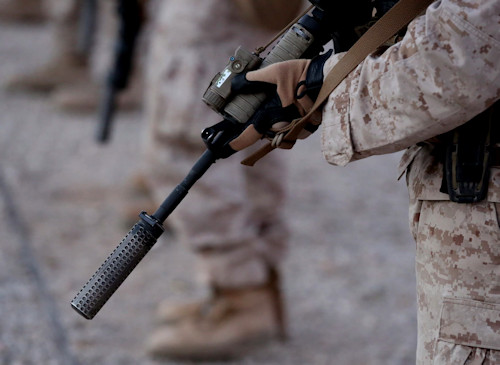
In the case of team support weapons, such as the new "marksman" rifles in 6.5 caliber Creedmoor, it will be the soldier's operational choice that will determine whether or not to use a sound suppression system, depending on the operational contexts.
The technique
Although the design requires a good level of technical-scientific knowledge, the construction is not a question of high engineering, but of the simple application of rules already foreseen for more than a century now, with variations from time to time dictated by experience and practical tests on the field.
What, in my opinion, really matters is "feeling" how the flow of gas behaves when the type and charge of powder used in the cartridge varies.
We subdivide by type of weapon and type of use i two types of suppressors that are more practical to use, remaining in the military context:
- handguns, medium weapons and assault rifles
- long guns
In both cases, the material used is steel or, at most, aeronautical aluminium. The external painting is necessarily heat-resistant, given the temperatures reached during operational use or training. The construction of all parts is of decimal precision, both in assembly tolerance and alignment, and provides for the possibility of complete disassembly of all components for cleaning and wear control purposes.
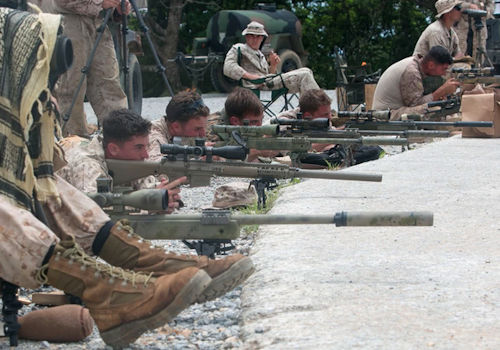 The dimensions (to be considered relatively) vary depending on the use, the length of the barrel of the weapon, and have approximately a ratio with the barrel of 1 to 1 for short and medium weapons, 1 to 3 for assault rifles , 1 to 2.5 for long range weapons. The length to diameter ratio will be 1 to 5 on the dimensions of the silencer. Example: a 61cm barrel will see a 25cm silencer as standard, with a diameter of 5cm.
The dimensions (to be considered relatively) vary depending on the use, the length of the barrel of the weapon, and have approximately a ratio with the barrel of 1 to 1 for short and medium weapons, 1 to 3 for assault rifles , 1 to 2.5 for long range weapons. The length to diameter ratio will be 1 to 5 on the dimensions of the silencer. Example: a 61cm barrel will see a 25cm silencer as standard, with a diameter of 5cm.
The tube will have a pre-chamber approximately twice as long as the reduction chambers, which usually range from 7 to 9, composed of variously perforated discs, even with a convex geometry contrary to the flow of the firing gases, usually (but not necessarily) held in position by springs or calibrated shims, with a central through hole having a slack of one millimeter compared to the gauge used. Obviously the base disc will be threaded, for locking on the muzzle of the barrel, while the opposite one will be through, both removable by screwing.
It seems, at first glance, nothing complicated. And instead, the armories and arsenals of the departments of the armed forces involved jealously guard their construction secrets and their alchemical recipes, the result of decades of experience in the field. Making as little noise as possible.
Read the first part Reduce the sound of a gunshot (forgetting about movies)
Photo: US Navy / web / US Marine Corps / US Army / Online Defense

